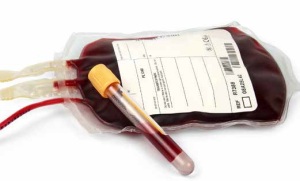From the July 2015 issue of HealthCare Business News magazine
At the time of her foundational work on the physiology of erythrocytes (red blood cells), pathologist Winifred Ashby had years of experience and education over her research colleagues and even most U.S. physicians. Winifred Mayer Ashby was born on Oct. 3, 1879, in London, England. When she was 14, her family relocated to the U.S. and settled in Chicago. Ashby went on to graduate from Northwestern University and the University of Chicago. In 1905, she received a master’s degree from Washington University in St. Louis. She then traveled to the Philippine Islands, where she spent a couple of years studying malnutrition in children.
Once she returned to the U.S., Ashby taught high school chemistry and physics. In 1914, she did laboratory work at Rush Medical College and Illinois Central Hospital. Three years later, during her time at the Mayo Clinic, she was awarded a prestigious immunology and pathology fellowship. This is where Ashby engaged in pioneering research on the life span of red blood cells.
At the time, the consensus among medical professionals was that red blood cells lived for around two to three weeks. To the surprise of the many leading physicians of her time, Ashby’s findings contradicted this assumption. While at the Mayo Clinic, Ashby did a lot of work on assessing the compatibility of various blood types for transfusions. To zero in on the life span of a red blood cell, she used the serologic technique (the study of serum and other body fluids). Ashby first mixed various types of blood, diluted them, and then spent several hours painstakingly counting the remaining red blood cells under a microscope. Her research proved that human red blood cells circulate in the body for up to 110 days.
Despite her meticulous research, Ashby’s results were largely disputed and ignored until the 1930s. It took a long time for other researchers to replicate and confirm her conclusions. She was wrongly criticized by her peers, but Ashby was the first individual to accurately define the life span of a human red blood cell. Her technique became known as “differential agglutination” or simply as “the Ashby method.” Eventually, scientific advances replaced the use of the method. Nevertheless, it was a widely used technique in medical and research institutions for 50 years.
Her findings enabled clinicians to develop a better understanding of how red blood cells function in healthy and sick individuals. The research also made it easier to diagnose anemia and other hemolytic diseases. Ashby’s work proved to be particularly vital to the storage and transport of large quantities of blood that were needed during World War II.
In 1921, she earned a doctorate degree from the University of Minnesota. She stayed at the Mayo Clinic until 1924 and then moved on to a job at St. Elizabeth’s Hospital in Washington D.C. At Elizabeth’s, Ashby oversaw various research projects and worked in bacteriology and serology laboratories. In 1949, she retired to a cottage in Virginia. During her career, Ashby made significant contributions to several studies on functions of the central nervous system. She also published a lot of her own work on the standardization of tests for syphilis.
Ashby reportedly continued to work even after she retired, writing papers from her cottage until she was 93 years old. She passed away at the age of 95 on July 19, 1975, after a cerebrovascular accident. In addition to her conducting pioneering research, Ashby also played the piano and was considered to be a gifted composer by friends and colleagues.
